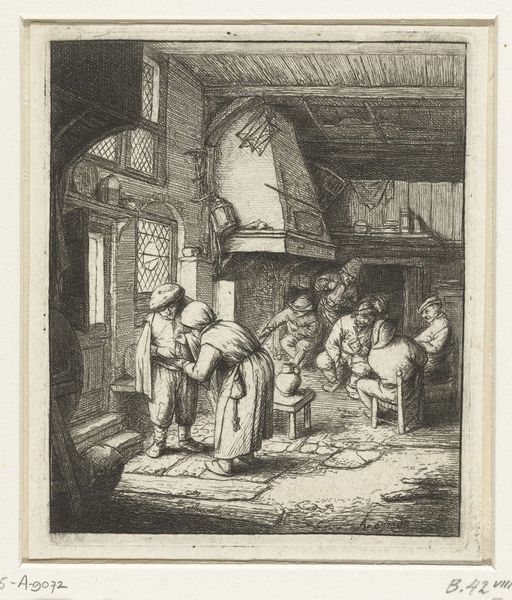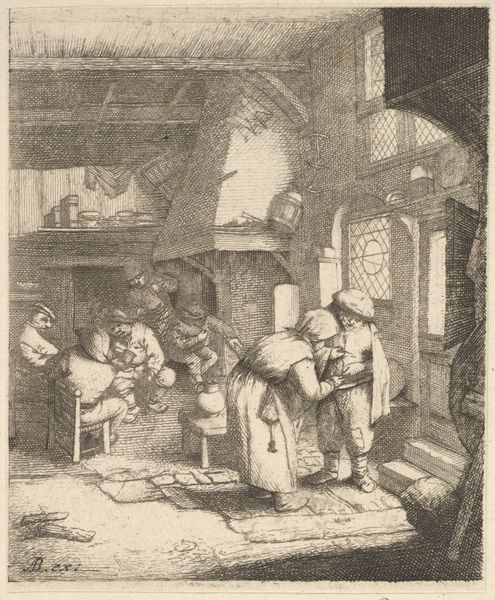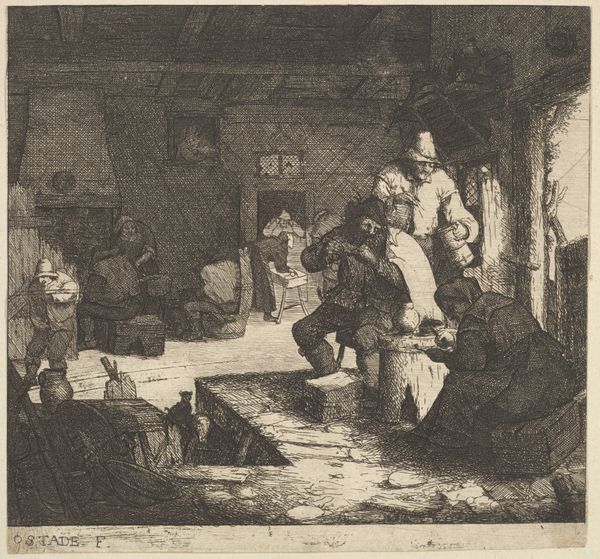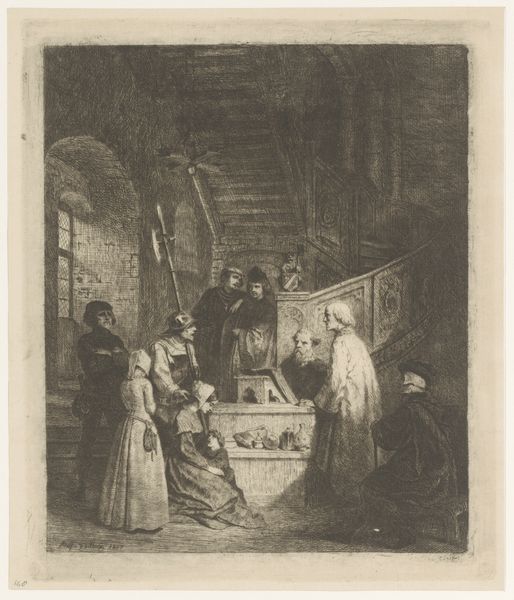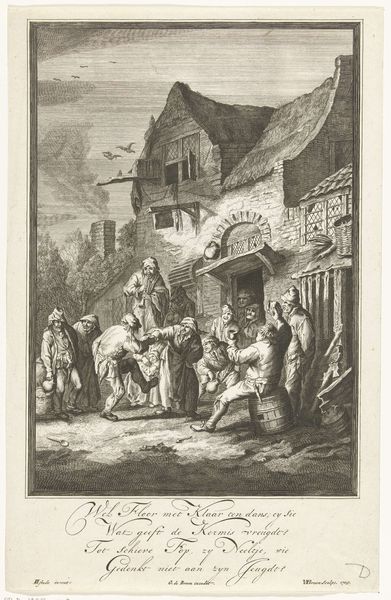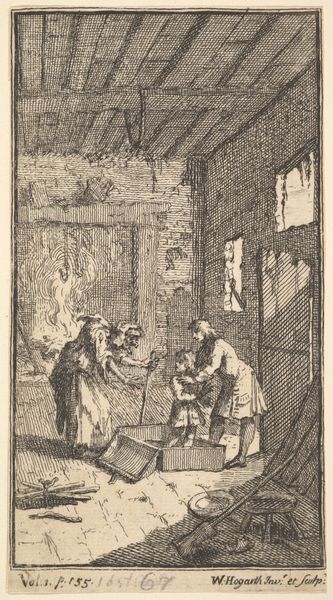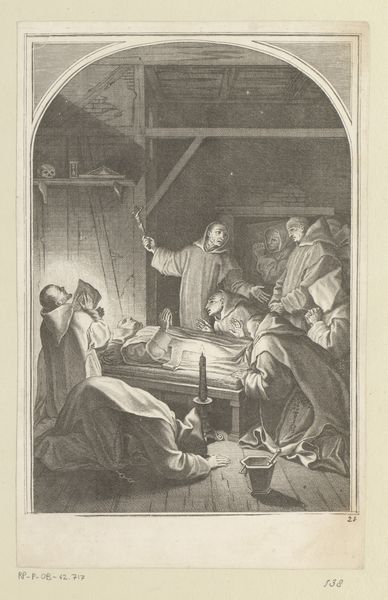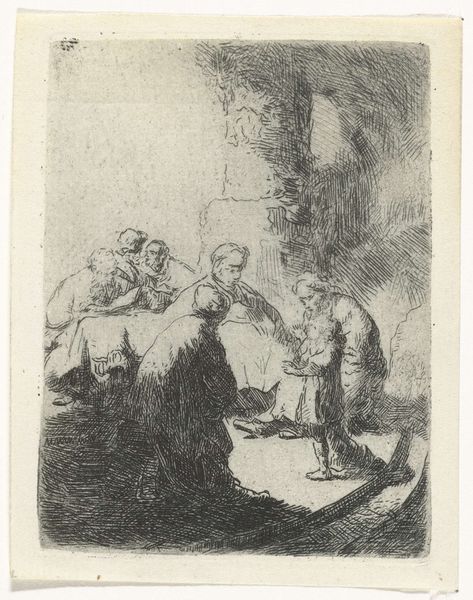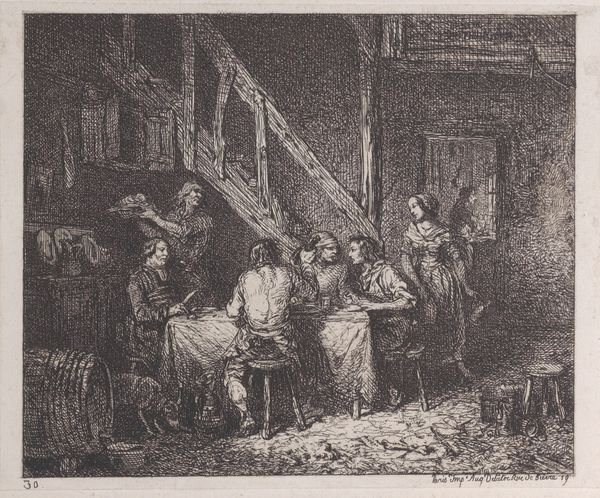
drawing, print, etching
#
portrait
#
drawing
#
narrative-art
#
dutch-golden-age
# print
#
etching
#
figuration
#
line
#
genre-painting
Dimensions: Sheet: 4 1/8 × 3 3/8 in. (10.4 × 8.5 cm)
Copyright: Public Domain
Editor: We're looking at Adriaen van Ostade’s etching, "Peasant Paying his Bill," created sometime between 1610 and 1685. The tiny details depicting this tavern scene are fascinating! But I am most struck by the interior; there is such a strong diagonal between the dark hearth in the background and the patrons and the brighter doorway in the foreground. What's your initial reaction? Curator: You know, it's that light, isn't it? The way it slices across the scene, drawing us into the transaction at the door. Van Ostade was a master of capturing everyday life, and this scene is so richly rendered, you can almost smell the beer and hear the chatter. For me, it's not just the composition but the feeling that Van Ostade transmits; an authentic portrayal of these figures, their humanity rendered palpable. Don’t you think? Editor: Yes, it does feel immediate! It is easy to feel as though we’re intruding, spying, somehow. Does that feeling connect to the genre somehow? Curator: Precisely! Genre painting is rooted in close observation, an attempt to reveal a truth, not unlike what you expect from good investigative journalism. With "Peasant Paying His Bill", Van Ostade almost invites us to partake in a clandestine peek into everyday life. We get the joke. I imagine this scene unfolded more times than he could possibly etch. Editor: The amount of activity packed into such a small image makes it really exciting to analyze, it invites you to linger. Curator: It’s true. Each little mark, each choice, creates this miniature world, so full of implied narratives! Thanks, this viewing made me see Van Ostade anew. Editor: And I learned more about genre painting! A great discovery!
Comments
No comments
Be the first to comment and join the conversation on the ultimate creative platform.

